Lyman Spitzer Jr. *38 ’s Stellarator
Princeton’s $34,000,000 Project For Thermonuclear Power Declassified by the AEC At the Geneva Conference.
Dr. Ellis graduated from Fisk University in Tennessee in 1948, the next year got his M.S. from Yale and his Ph.D. from the University of Iowa in 1954. At the time he was appointed an experimental physicist on Princeton’s Project Matterhorn, he was Associate Professor of Physics at Alabama Agricultural and Industrial College. Despite a careful checking of this article by his colleagues, he still feels that in the interest of popularization he has oversimplified the theory of Stellarator and minimized the formidable technological difficulties which lie ahead; he urges the layman with a scientific bent to read the official history published by the Atomic Energy Commission this month: Operation Sherwood by Amasa Bishop (Addison-Wesley Publishing Co., Cambridge, Mass.). This was brought out to coincide with the second International “Atoms for Peace” Conference in Geneva, which was attended by 24 Princeton scientists. The ultimate goal of Stellarator research is explained in the “On the Cover” box on the preceding page. The art work on pages 8-9 and the cover are by Jerry Motyka of the Matterhorn staff. For reasons of space Dr. Ellis’ description of the parallel experiments at Los Alamos, Berkeley, and Oak Ridge, which attempt a controlled thermonuclear reaction by techniques of the “pinch effect,” the “magnetic mirror,” or the “Direct Current Experiment” (DCX) had to be omitted. – Editor (1958)
When the Atomic Energy Commission declassified Project Sherwood, the code name for its activities in the field of controlled thermonuclear reactions, it may have come as a surprise to Princetonians that a large portion of the work was being carried out at Princeton University at the James Forrestal Research Center under the name Project Matterhorn. The research at Princeton is directed by Professor Lyman Spitzer Jr. g’38, who is the Charles A. Young Professor of Astronomy and Chairman of the Astronomy Department. IN 1951 Professor Spitzer conceived of a device, which he called a Stellarator, which could, in principle, produce controlled thermonuclear reactions. Since then he has pursued these ideas at Project Matterhorn with the aid of a staff which has grown to more than two hundred people. Presently under construction at the James Forrestal Research Center is a large complex of buildings and machinery, the Model-C Facility, which will make possible more advanced research in this area.
Many questions may occur to interested persons as they hear more about Project Matterhorn and its work. We shall attempt here to anticipate many of these queries and provide some answers as we discuss, in turn, the significance of achieving controlled thermonuclear reactions; the organization of Project Matterhorn; controlled thermonuclear reactions in general; and the basic concepts involved in the Stellarator.
Studies of nuclear physics during the last thirty years have revealed that there is a net energy release when certain of the very light nuclei react to form heavier nuclei. These reaction, called nuclear fusion or, just as frequently, thermonuclear reactions, account for and are caused by the high temperatures of the stars of the heavens, and these reactions also account for much of the energy released in an H-bomb explosion on earth. A controlled thermonuclear (or fusion) reactor can be defined as a device in which the appropriate nuclei of light elements can undergo nuclear fusion with the result that under controlled conditions, useful quantities of energy, in excess of that required for operation, can be extracted. Although there are proposals for utilizing actual H-bomb explosions to get power from thermonuclear reactions, we will not be concerned with such methods here.
Now let us examine the status of the world’s energy resources and the current predictions on the rate of increase of power consumption. The significant energy sources at present are the fossil fuels, coal and oil, and uranium which can supply energy by nuclear fission. If the present rate of growth of power consumption persists, and there is reason to believe it will increase, one hundred years from now the rate of power consumption will be about one thousand times the present value. How long could fossil and fission fuels supply this estimated rate of power consumption? The known oil reserves of the world would last about a month, the coal would last about half a year; and even fission fuels would last only a few decades. We might mention in passing that in addition to the problem of radiation accidents, if a significant fraction of the power were derived from fission fuels, the radioactive wastes to eb disposed of would be comparable in amount to that produced by thousands of atomic explosions each week.
If a controlled thermonuclear reactor can be made a reality, deuterium (the most likely fusion fuel), which is found in water, could supply one thousand times the present power consumption for one billion years, with negligible radiation problems. These estimates of energy consumption and energy resources clearly indicate that utilization of nuclear fusion as an energy source will be necessary if civilization as we know it is to survive. It is also clear that controlled thermonuclear power will be needed within this century. A further consideration of importance is that the distribution of water, and hence deuterium, is reasonably uniform the world over, and there would be no “have not” countries in the sense of inadequate energy resources. Still another favorable factor is the low cost of deuterium. At present date prices, ten cents worth of deuterium could supply as much energy as three hundred gallons of gasoline. Unfortunately, the problem of producing a controlled thermonuclear reactor has not been solved, and indeed, it may be insoluble. This is the task confronting scientists at Project Matterhorn and at other places all over the world.
Despite the fact that we have already stressed the importance to mankind of vigorously pursuing research toward realizing controlled thermonuclear reactions, some may feel that, however worthy, such a large scale endeavor as Project Matterhorn may be somewhat out of its element at a university. It should be acknowledged that such large projects do generate problems for a university. I believe the following discussion of the ideas and status of research in the controlled thermonuclear reactor field will show that this research is really basic. If we can substantiate this contention, then Project Matterhorn is not in conflict with the accepted research function of Princeton University.
Since 1951, theorists at Project Matterhorn have thoroughly analyzed the fundamental concepts of the Stellarator and have pronounced them sound. During this same period of time several research devices, which are also called Stellarators, have been built at Project Matterhorn for the purpose of subjecting the theoretical concepts to experimental verification. By mid-1957 the results of the theoretical and experimental investigations indicated the need for a research Stellarator which would have to be much larger than those in existence. On the basis of the results just referred to, the Model-C Stellarator Facility was planned and approved.
The research at Project Matterhorn is carried out under a cost reimbursement contract between Princeton University and the Atomic Energy Commission. The Atomic Energy Commission monitors Project Matterhorn through its New York Operations Office with Mr. Merril Eisenbud as Manager of Operations. The New York Operations Office has, in turn, set up a Princeton Area Office, with Mr. Enzi De Renzis as Area Manager, because of the large amount of administrative work involved with Project Matterhorn as well as with the Princeton-Pennsylvania Accelerator Project, which is not connected with Project Matterhorn. The Committee on Project Research and Invention, headed by Professor Henry D. Smyth ’18, is the agency which generally supervises research of this type within the University. However, the size of Project Matterhorn is large enough to require its own review committee which is, essentially, a parallel committee to the Committee on Project Research and Invention. Professor Smyth is the chairman of this committee also, and it is made up of representatives from the parent committee, Project Matterhorn, and several other members of the faculty.
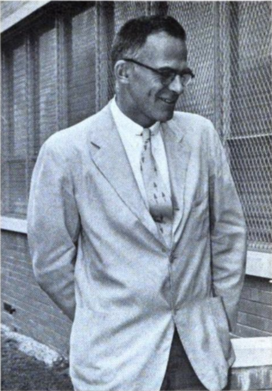
Professor Spitzer is the director of Project Matterhorn; Dr. Melvin B. Gottlieb is the associate director and head of the Experimental Division; and Professor Norman B. Mather of the Electrical Engineering Department is the assistant director and head of the Engineering Division. In addition to the Experimental and Engineering Divisions, there are the Theoretical Division, headed by Dr. Edward A. Frieman; the Machine Development Division, headed by Dr. Robert G. Mills; and the Administrative Division headed by Mr. Robert Von Verdo. The division heads and Professor Spitzer comprise Matterhorn Executive Committee. The staff of Project Matterhorn has grown from two in 1951 to two hundred and twenty-four at present. About half of the staff is at the professional level, with the remainder consisting of technicians, machinists, clerical and other supporting personnel.
After the proposal to build the Model-C Facility was approved and funds made available by the Atomic Energy Commission, Princeton University subcontracted with the Allis-Chalmers Corporation to build the Model-C machine and associated power supplies to requirements provided by the Project Matterhorn staff. Allis-Chalmers in turn has subcontracted with the Radio Corporation of America for the design and development of parts of the Model-C Facility. The result of this alliance between Allis-Chalmers and RCA is a group called C-Stellarator Associates with Mr. Leonard Linde of Allis-Chalmers as Manager and Dr. Edward Herold of RCA as Associate Manager. C-Stellarator Associates is quartered at the Forrestal Research Center in the Theobald Smith House with a staff of about sixty people. The Model-C steering committee is the administrative link between Project Matterhorn and C-Stellarator Associates.
The operating budget of Project Matterhorn for the current year is about five million dollars. The estimated cost of the complete Model-C Facility is about thirty-four million dollars; of this amount about 8 million is being spent by the Atomic Energy Commission Princeton Area Office directly, rather than through the contract with Princeton, for structures and site work on the seventy-acre tract set aside for this research at the eastern corner of the Forrestal Research Center.
THEORETICAL CONSIDERATIONS
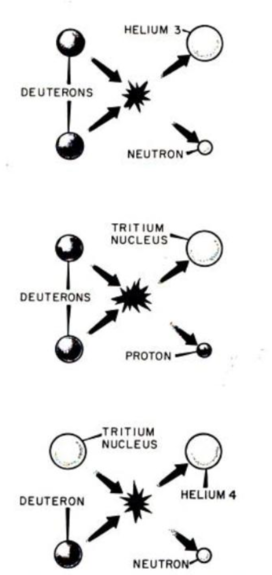
As an aid in our discussion of the Stellarator, we shall acquaint ourselves with the basic physical principles of a controlled thermonuclear reactor. Atomic nuclei are collections of protons and neutrons which are positively charged and tend to repel each other. However, if we give an atomic nucleus sufficient energy (or velocity) it can overcome this repulsive force and collide with other nuclei. These collisions are of interest here. We will consider the collisions of the heavier varieties of hydrogen nuclei. Hydrogen has three isotopes: (1) ordinary hydrogen whose nucleus is the simplest of all atoms; it consists of a single, positively charged proton, (2) deuterium, which consists of a proton and a neutron joined together, occurs naturally with 0,02 per cent of the abundance of ordinary hydrogen (the nucleus is called a deuteron), (3) tritium, which consists of a proton and two neutrons, is radioactive with a half life of about twelve years and is not found in nature (the nucleus is called a triton). When two deuterons collide, under some conditions they stick together (fuse) and produce new particles and a net release of energy by two reactions. (Fig. 1 illustrates these reactions.) This release of energy is manifested as kinetic energy of the products of the reaction. To illustrate this last point with an examples, assume that somehow we could get two deuterons close enough to each other to fuse while they are both at rest. Then the products of the fusion reaction would be formed with energies of motion equal to the energy release mentioned above. The reaction of a deuteron and a triton is a particularly attractive reaction since we get here a normal helium nucleus and a neutron and four or five times the energy when two deuterons react.
The most important fact that comes from the data on the reactions of hydrogen nuclei is that there is a net release of energy. This energy release at the expense of a decrease in mass, in accordance with the celebrated equation of Einstein, E = mc². This means that if one is sufficiently clever and if nature is not too contrary, one might make a device which could utilize this reaction as an energy source. The hydrogen bomb is awesome evidence that this goal has already been successfully attained in an uncontrolled manner.
From the kinetic theory of gases we recall that we consider a gas above absolute zero to be a collection of randomly moving atoms which are colliding with each other. We will call this random motion thermal motion. The pressure of a confined gas and the random thermal velocities increase as we increase the temperature. If we continually increase the temperature of a gas the random motions of the atoms become so violent that the negative electrons are stripped from their parent positive nuclei and become free agents in a gas composed of negatively and positively charged nuclei, with both types of particles independently moving randomly about each other. This gas of positively and negatively charged particles is called a plasma, and its properties are so distinctive that it might qualify as a fourth state of matter.
What high temperature would be required? To determine this temperature we calculate the rate of energy production from the nuclear reactions as we increase the temperature and we calculate the rate of energy loss as we increase the temperature. The temperature at which the energy production exceeds the energy losses is the minimum operating temperature. This temperature, which will be referred to as the ignition temperature, varies with the assumed operating conditions. A reasonable value to aim for is about 100,000,000° C.
At a temperature of one hundred million degrees, every known material would instantly vaporize. Somehow, we must produce a non-material container. Let us now recall another basic principle. In a uniform magnetic field, a charged particle moves freely along the field, but moves in a circular path in the plane perpendicular to the field. If we imagine lines which lie in the direction of a magnetic field, called lines of force, we can conveniently think of charged particles moving in a helical or “corkscrew” path about a magnetic field line as if they were “stuck” to the line. The frequency of rotation about the field line is called the cyclotron frequency. Figure 2 is intended to illustrate the motion of particles in a uniform magnetic field. The coil shown in Fig. 2, which is called a solenoid, can produce a uniform magnetic field.
A magnetic field restricts the motion of particles in directions perpendicular to it. This is precisely the sort of action we need, but something has to be done about the motion along the field. Otherwise plasma particles would leave the reacting region by moving along the field lines. Fortunately there are measures available to us to combat the undesired effects of motion along the magnetic field. Magnetic containment, although not perfect, should be adequate for a controlled thermonuclear reactor. When a magnetic field is used for containment of a plasma, it is frequently referred to as a “magnetic bottle.” Adequate confinement means that an average particle of the plasma is retained in the plasma for a length of time about equal to the average time required for it to undergo a nuclear reaction. We will not be much in error if we take the time to be a few seconds. We might note in passing that the enormous gravitational fields of stars are responsible for the confinement of their plasmas and that the terrestrial gravitational field is much too weak to serve the same purpose.
Up to now, our discussion is reasonably well founded on experiment, with the exception perhaps of our confidence in magnetic containment of a hot plasma. The problem of ultimate heating to the operating temperature has not been solved completely, even theoretically, but there are some extremely promising ideas under active investigation. Since charged particles are accelerated by electric fields, most proposals for heating a plasma to the ignition temperature require the use of either a directly applied of an induced electric field (one caused by a changing magnetic field).
To round out the general discussion of controlled thermonuclear reactors we consider the extraction of the energy. There are plans in many cases to incorporate a controlled thermonuclear reactor into a conventional thermal cycle for the generation of electrical power with the reactor replacing the source of heat. It is important to note that because some of the reaction products are charged particles, it is possible, in principle, to make direct conversion of thermonuclear power to electrical power.
After following through the above analysis of the requirements of a controlled thermonuclear reactor, we might ask ourselves if we have forgotten anything important, and it turns out that we have. So far we have assumed that the deuterons in the plasma are independently colliding to give us fusion and power, but we have ignored the fact that there might be effects in the plasma due to the presence of large numbers of particles. We call the effects of collective actions of particles cooperative phenomena. We know that cooperative phenomena will be of importance in both confinement and heating. Hence, we must devote a large effort to opening up this virgin scientific territory.
We have also neglected to stress the importance of minimizing the concentration of impurities in the plasma. The effect of impurities is to increase greatly the energy loss from the plasma due to radiation. For example, at a given temperature, a one per cent concentration of carbon impurity in a deuterium plasma would increase the energy loss due to radiation by about thirty-six per cent and the situation is worse for heavier elements. A large part of the effort in making a controlled thermonuclear reactor must be devoted to reducing the concentration of impurities.
Now we can sum up our discussion of the basic principles and problems by stating that if we are to succeed in making a controlled thermonuclear reactor, we must heat a deuterium plasma to about 100,000,000°C in an appropriate confining configuration.
The Princeton Story
After reading a news report in 1951, which subsequently proved to be false, that one Ronald Richter, working in Peron’s Argentina, had reached the threshold of a controlled thermonuclear reaction. Lyman Spitzer began to think about how this feat might be achieved. The culmination of this activity of Professor Spitzer was the Stellarator. The Stellarator is a device which, in theory, can satisfy the condition which we have set forth for a controlled thermonuclear reactor. We shall now see how the Stellarator meets the requirements of confining and heating a plasma.
We begin with the confinement of a plasma in a Stellarator. A uniform magnetic field confines a plasma in directions perpendicular to the field, but is ineffective in preventing streaming of particles out the ends. When we close a solenoid on itself to form a toroidal or ring-shaped coil, we find that the magnetic field lines close on themselves and that the magnetic field becomes non-uniform across a cross section. The effect of this non-uniformity is to cause particles of opposite charge to drift in opposite directions, across the magnetic field, and create electric fields which act to destroy the confinement. If this ring-shaped coil is twisted into a sort of figure-8, it becomes possible for particles moving along magnetic field lines to cancel the undesired electric fields. If we follow a line of force many times around this twister toroid, it does not close on itself, but intersects a given cross section at successively rotated points. This property of a magnetic field which has a twist is called rotational transform and it is essential to the Stellarator.
Further investigation of magnetic fields with rotational transform has led to the development of the “racetrack” type of Stellarator. This type of Stellarator retains the basic geometry of a simple toroid and provides rotational transform by adding some helical or “corkscrew” conductors to a simple toroidal configuration. The “racetrack” type of Stellarator has been shown theoretically to be capable of providing stable equilibrium confinement of a hot plasma.
The heating of a Stellarator is of two types, ohmic and magnetic pumping. Ohmic heating is quite analogous to the heating of a wire when a current passes through it. To apply ohmic heating to a plasma an electric field is induced parallel to the confining field. Since charged particles flow freely in the direction of a magnetic field, a current flows when an electric field is applied parallel to a magnetic field. The heating effect of this current is sufficient to heat a plasma to about 1,000,000°C, at which temperature the plasma becomes such a good conductor that ohmic heating is rendered too inefficient to be of further use.
Magnetic pumping refers to the heating of the plasma by electric fields which are perpendicular to the confining magnetic field. These perpendicular electric fields are induced by periodically changing the magnetic confining fields. These electric fields mainly act on the ions. Theoretical studies at Project Matterhorn have indicated that heating by magnetic pumping should be effective in heating a plasma to the ignition temperature. This theory ignores cooperative effects because they are not well enough know to incorporate into theoretical models. Figures 3 and 4 show schematic arrangements for both types of heating on both figure-8 and “racetrack” types of Stellarator.
To reduce the impurity level in a Stellarator the emission from the walls of the material container is made extremely small by means of ultra-high vacuum techniques. A further step in impurity control is provided by the divertor which is illustrated in Fig. 4. The divertor acts to lead the particle sin the outer layer of plasma away from the reacting region. Since it is likely that most of the impurities will be near the wall of the vacuum vessel, the divertor is expected to play an important role in reducing the impurity level as it continuously shunts the outer plasma layer away from the central core of the plasma.
The theoretical analysis of the entire Stellarator concept has not revealed any tragic flaw, and we can honestly say that the Stellarator represents a most promising approach to a controlled thermonuclear reactor. However, most of what we have said so far is based on theoretical considerations, sound notions, to be sure, but still theoretical. Now we come much closer to the more immediate goal of Project Matterhorn. The question to be answered is: Will a Stellarator work in practice?
Several small scale experimental models of Stellarators have been built since 1951. The Model A Stellarator was constructed by Professor Spitzer and his co-workers in 1952 to test the idea that rotational transform would provide a means of combating the drifts of particles in toroidal systems. By operating Model A as a figure-8 and as a toroid, he was able to show that the figure-8 geometry showed a definite advantage over the toroidal geometry in agreement with the theoretical expectations. In this Stellarator a radio-frequency type of ohmic heating was used to produce a relatively cold plasma.
In 1954 the B-1 Stellarator was completed. It is a figure-8 type Stellarator. The vacuum system for this machine was of conventional design. The confining field was pulsed with a maximum value of about thirty kilogauss. Only ohmic heating was provided. Results obtained from the B-1 Stellarator confirmed the belief that ohmic heating could raise the temperature of a plasma to several hundred thousand degrees. The single particle confinement of Stellarators was found to be excellent. Impurities were present in such large quantities that measures were taken to utilize ultra-high vacuum techniques to reduce the emission of impurities from the walls of the container. In 1956 the B-1 machines was reconstructed and provided with an ultra-high vacuum system. The results obtained indicated that although the impurity level was much reduced, the concentration was still high enough to interfere with heating. Also, investigations conducted with this Stellarator revealed that the particles in a relatively quiescent cold plasma could be confined for as long as ten milliseconds but that the average confinement time for the particles in a plasma during the ohmic heating phase was only a few tenths of a millisecond. The short confinement time during ohmic heating is almost certainly due to cooperative phenomena at work in the plasma. The nature of the cooperative effects is such that one believes a more appropriate name could be found!
The B-2 Stellarator was completed in 1956. It was equipped for both ohmic heating and magnetic pumping. Otherwise it is much the same as the B-1 Stellarator. Originally assembled with a conventional vacuum system, it was subsequently fitted out with an ultra-high vacuum system. For ohmic heating the B-2 Stellarator gave results similar to those obtained from B-1, including the short confinement times and impurity effects. When magnetic pumping was attempted on B-2, there was little heating observed. This result was not unexpected because the theory was based on much longer confinement times. The B-2 Stellarator was exhibited at the recent Atoms for Peace Conference in Geneva.
The B-64 (1955) and B-65 (1957) Stellarators were simpler to build than the other Stellarators mentioned here, but they operate at somewhat lower pulsed confining fields. B-64 is a figure-8 type Stellarator and B-65 is a “racetrack” type. Both had pulsed confining fields of about 15,000 gauss and somewhat larger plasma diameters than the B-1 and B-2 stellarators. Here again the results are in substantial agreement with those obtained on other machines. These machines have conventional vacuum systems, but are extremely flexible in application. Consequently they are well suited to testing new ideas. The divertor which was first installed on B-64, reduced the impurity level by a considerable factor as expected. The B-65 machine has been used to investigate magnetic pumping at the ion cyclotron frequency. B-66 (to be ready in December, 1958) is the latest and probably the last in the series of machines of relatively simple construction. It is of the “racetrack” type and will have substantially higher confining field than B-64 or B-65 and an ultra-high vacuum system. It has been designed primarily to test the heating by magnetic pumping at the ion cyclotron frequency.
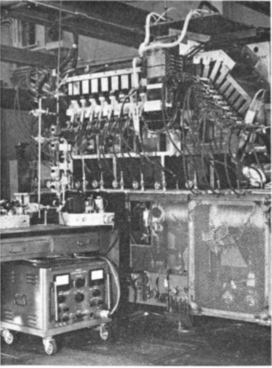
In 1957 the B-3 Stellarator was completed. It is a figure-8 Stellarator designed to operate with a 50,000 gauss pulsed confining field with a useful duration of about 0.01 second, and can be assembled in a variety of configurations for experiments with magnetic pumping, divertors, helical windings (note that helical and figure-8 geometries are not incompatible), and ohmic heating. Its initial operation was devoted to studies of cooperative phenomena during ohmic heating in the simple figure-8 configuration with results in agreement with those previously obtained. Figure 5 is a photograph of the B-3 Stellarator.
The “Etude” Stellarator is a Stellarator of the “racetrack” type with helical windings and a direct current confining field. It was primarily designed as a device to produce a relatively low temperature plasma for general study purposes. It is equipped with an ultra-high vacuum system. It began operating during the past summer and, at present, is being used to investigate cooperative phenomena.
Summarizing the results of theoretical and experimental investigations concerned with Stellarators, we could state that, theoretically, a Stellarator should be capable of confining a plasma and heating it to the temperature at which thermonuclear reactions would be self sustaining. Experimentally, we have found that ohmic heating can raise a plasma to a temperature of nearly one million degrees, but that during ohmic heating cooperative phenomena apparently are reducing the confinement time of particles to values much below that expected for a quiescent plasma. We have also found that the effects of impurities are dominant in conventional vacuum systems, and remain important, but of greatly reduced influence in ultra-high vacuum systems. While there are numerous studies of value which can be and are being pursued on the existing Stellarators, it has become obvious that further fundamental advances require a new and larger Stellarator.
The New Model-C
That the new Stellarators should be larger in size is dictated by the following factors, among others: (1) larger physical size would make all physical measurements easier and make some measurements possible for the first time; (2) a larger plasma diameter would almost certainly increase the containment time during ohmic heating in spite of cooperative phenomena and thus make possible more significant tests of magnetic pumping; (3) a steady magnetic confining-field during the course of a given measurement would be most desirable; and (4) the plasma in a larger Stellarator would have a smaller surface to volume ratio, which should reduce impurity effects.
The result of studies to determine the specifications of the first Model-C Stellarator is the Model-C Facility, now under construction at the Forrestal Research Center. Figure 6 shows a mock-up of the first Model-C Stellarator which will be a “racetrack” type. On way of describing the Model-C Facility is to call it an enormous power supply which can deliver thousands of kilowatts of direct current and thousands of kilowatts of alternating current at frequencies from tens of kilocycles to tens of megacycles. The major initial expenditures for the Model-C Facility will be for the structures and power supplies. These same power supplies can be used to operate much larger Stellarators than the Model-C which is now under construction. The schedules completion date for operation of the first Model-C Facility is June, 1959, and the date for operation of the first Model-C Stellarator, which will have only ohmic heating, is September, 1959. The installation of a divertor and magnetic pumping equipment should take an additional year, and operation with this equipment is scheduled for September, 1960. It is expected that controlled thermonuclear reactions can be unequivocally demonstrated with the Model-C Stellarator.
Even if our optimism is vindicated, we should point out that Model-C would not be a useful power source. Proving that a controlled thermonuclear reaction has occurred is a very important and very difficult task which, we might add, has yet to be done. However, we should stress the fact that the first demonstration of a controlled thermonuclear reaction will simply indicate that a significant first step has been taken toward the ultimate goal. Thus a successful Model-C would provide the basis for still another Stellarator and so on, until, many years from now, a working controlled thermonuclear reactor would be incorporated into a public utility system.
It might help place current research on controlled thermonuclear reactors in proper perspective by repeating the remark made by Dr. Edward Teller several years ago at a conference of Project Sherwood personnel: “If one wants to catch a bird by putting salt on his talk, he must first get the salt!”
This was originally published in the September 19, 1958 issue of PAW.



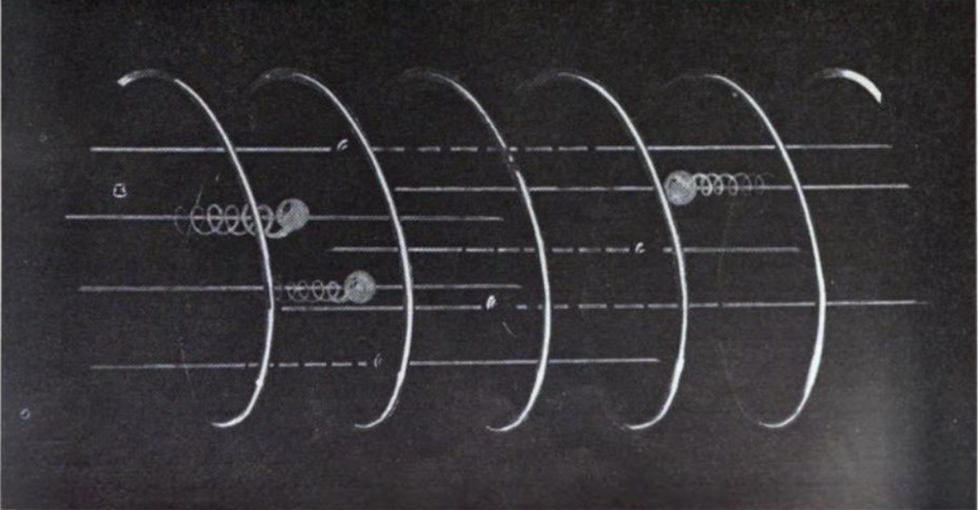
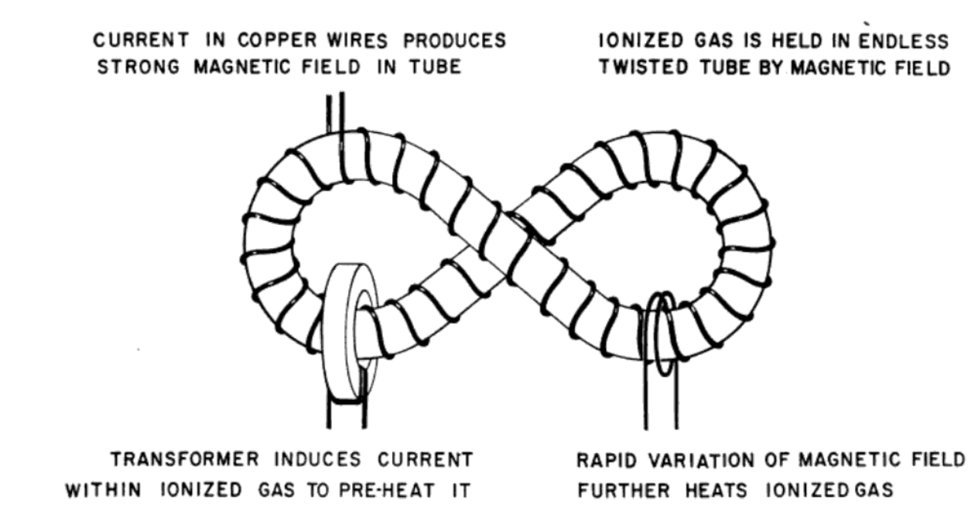
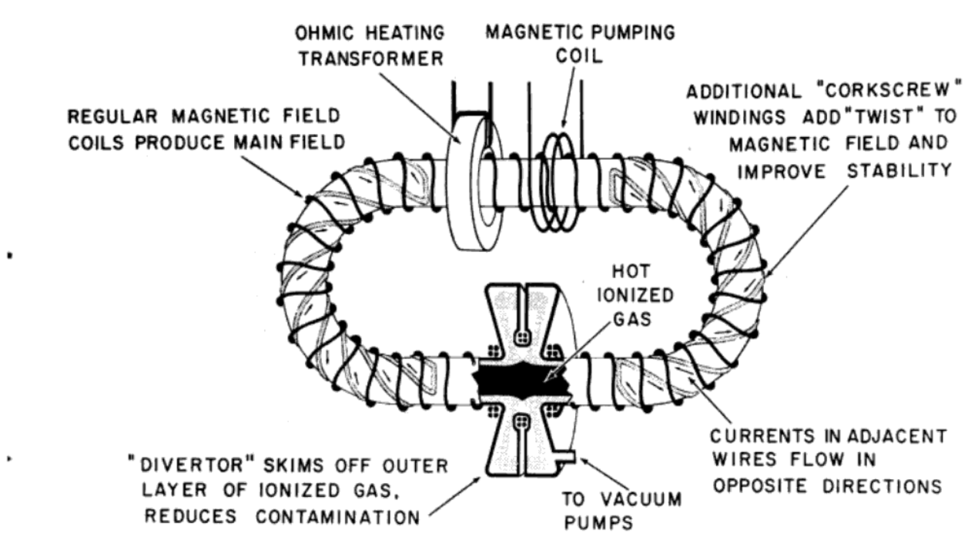
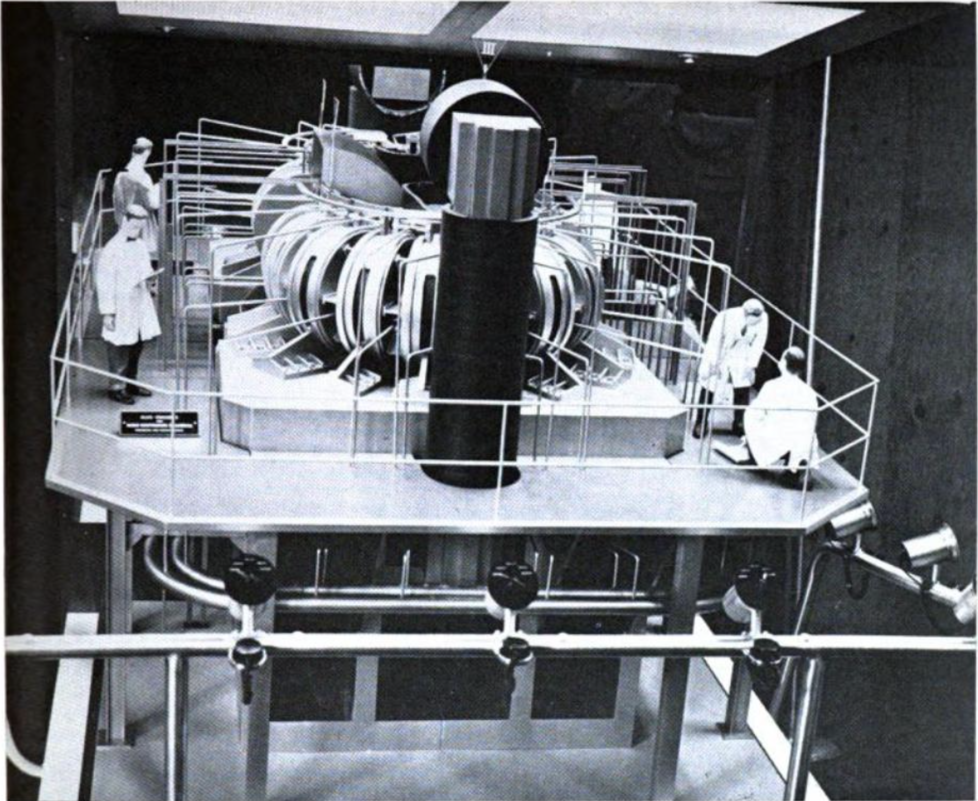









No responses yet